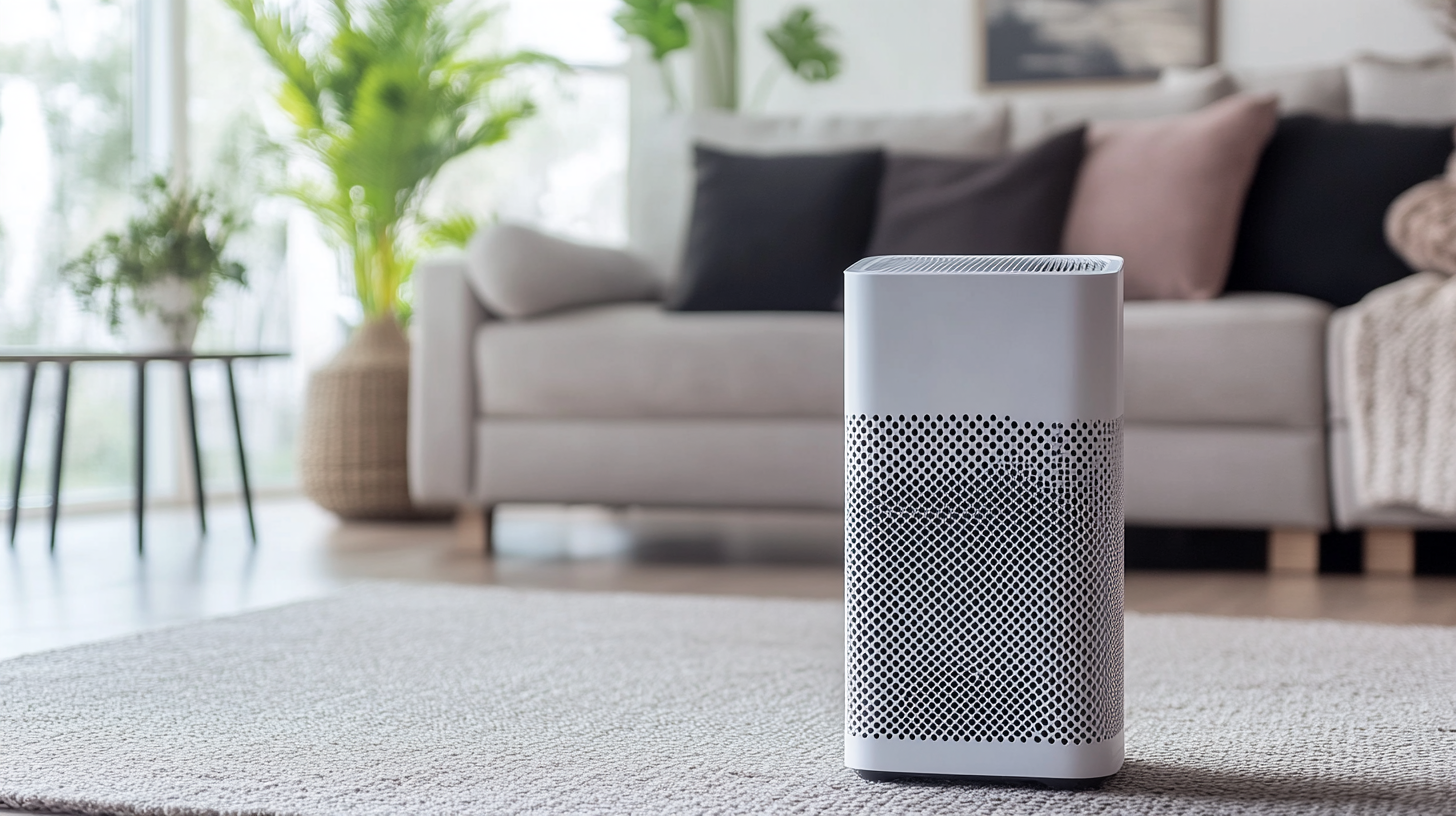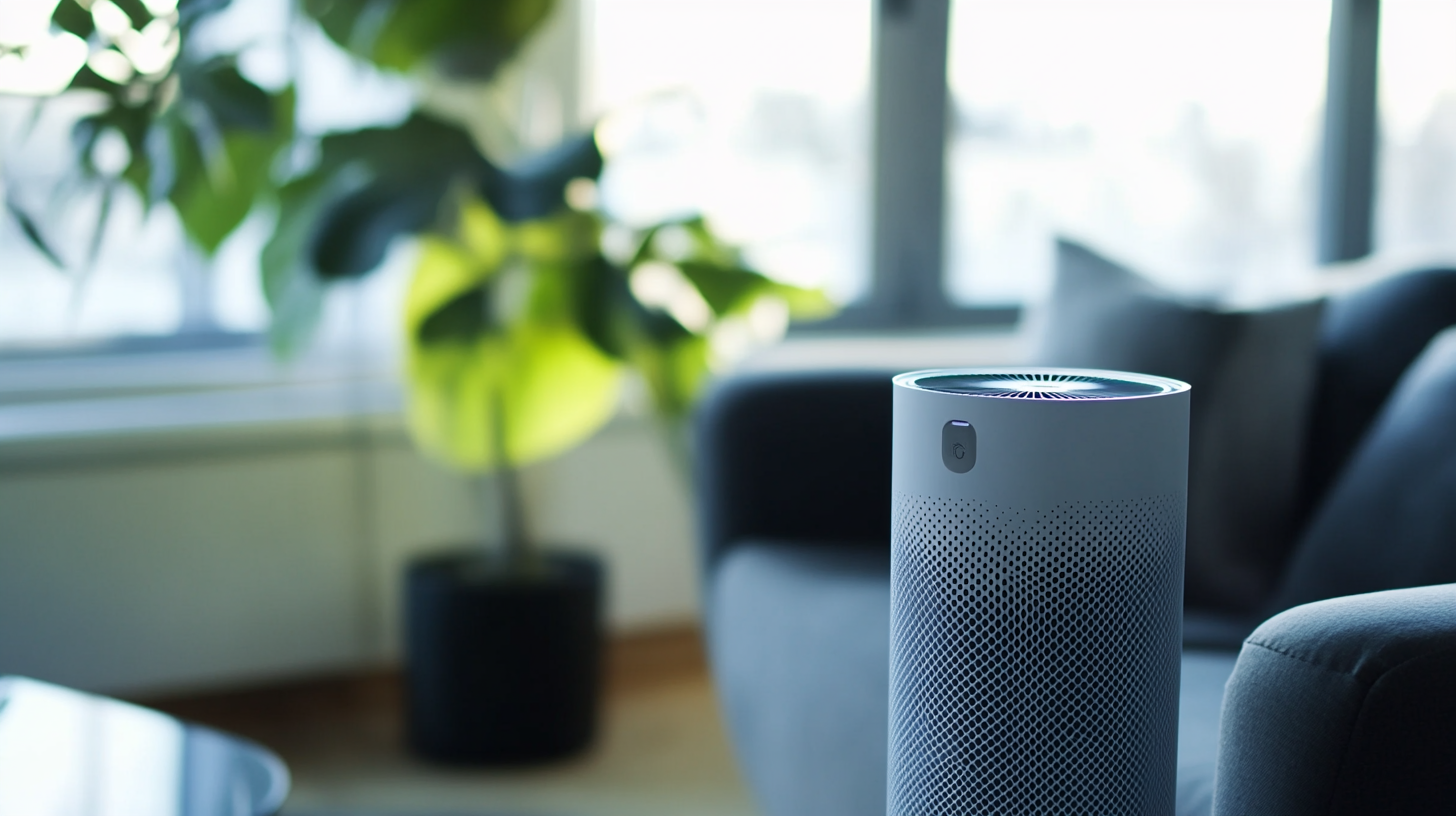
The Ultimate Guide to Choosing the Best Air Purifier Air Filter for Maximum Indoor Air Quality
Indoor air quality is a crucial aspect of maintaining a healthy living environment, and one of the most effective tools at our disposal is the Air Purifier Air Filter. As air pollution becomes an increasing concern, understanding how to choose the best purifier tailored to your specific needs can help ensure that you breathe clean, fresh air indoors. This ultimate guide aims to demystify the process of selecting the appropriate air purifier by exploring various types and their applications across different environments, from homes to offices and beyond. By examining real-world case studies and outlining key features to consider, we will empower you with the knowledge needed to make informed decisions for maximum indoor air quality. Whether you're dealing with allergens, smoke, or pet dander, the right Air Purifier Air Filter can significantly enhance your air's purity and your overall well-being.

Understanding Different Types of Air Purifier Filters and Their Benefits
When it comes to improving indoor air quality, selecting the right air purifier filter is crucial. There are various types of filters available, each designed to tackle different pollutants. HEPA filters, for instance, are renowned for removing at least 99.97% of particles as small as 0.3 microns, according to the U.S. Environmental Protection Agency. These filters are highly effective in capturing dust, pollen, and pet dander, making them ideal for allergy sufferers.
Activated carbon filters, on the other hand, excel at absorbing odors and volatile organic compounds (VOCs). These filters work by using a porous material that traps gases, providing a fresher indoor atmosphere. A study published by the American Lung Association highlights that using air purifiers with activated carbon can significantly reduce indoor air pollutants, which are often higher than outdoor levels.
**Tips:** Always consider the size of your room. A filter that’s too small for your space won’t be effective. Additionally, regular maintenance of your air purifier, including timely filter replacements, is essential to ensure optimal performance. Lastly, check the noise levels of the air purifier, especially if you plan to use it in a bedroom or office for extended periods.
The Ultimate Guide to Choosing the Best Air Purifier Air Filter for Maximum Indoor Air Quality
| Filter Type | Common Materials | Effectiveness | Benefits | Lifespan |
|---|---|---|---|---|
| HEPA Filter | Fiberglass, Synthetic Fiber | 99.97% for particles ≥0.3 microns | Removes allergens, dust, pet dander | 1-3 years |
| Activated Carbon Filter | Charcoal, Coconut Shell | Variable | Absorbs odors, gases, and VOCs | 6-12 months |
| Pre-Filter | Foam, Fabric | N/A | Extends the life of HEPA filter | 1-2 months |
| UV Light Filter | Quartz Glass | Effective against bacteria and viruses | Sterilizes air, improves safety | 1-2 years |
| Ionizer | Ionization Technology | Produces charged particles | Reduces airborne particles | Variable |
Key Features to Consider When Selecting an Air Purifier for Your Home
When selecting an air purifier for your home, it's essential to consider several key features that impact indoor air quality. According to a report by the Environmental Protection Agency (EPA), indoor air can be two to five times more polluted than outdoor air, highlighting the importance of a quality air purifier. One of the primary factors to consider is the type of filter used. HEPA (High Efficiency Particulate Air) filters are recommended for capturing up to 99.97% of particles as small as 0.3 microns, making them highly effective for allergens like pollen and pet dander.
Another critical feature is the Clean Air Delivery Rate (CADR), which measures how quickly an air purifier can remove smoke, dust, and pollen from the air. The American Lung Association suggests that choosing a unit with a CADR rating appropriate for your room size ensures efficient air purification. It’s also vital to consider noise levels, particularly if the purifier will be used in bedrooms or living areas. Some models operate quietly while still offering high performance, thus maintaining a peaceful environment. Investing in an air purifier with these features will significantly enhance your home's air quality and overall health.
The Ultimate Guide to Choosing the Best Air Purifier Air Filter for Maximum Indoor Air Quality
Comparing Popular Air Purifier Brands and Their Performance Metrics
When it comes to selecting the best air purifier, understanding the performance metrics of popular brands is crucial. Leading brands such as Dyson, Honeywell, and Coway each offer unique features and technology capabilities that influence their effectiveness. For example, Dyson purifiers often combine sleek designs with advanced HEPA filtration, making them both functional and aesthetically pleasing. Honeywell models, on the other hand, are renowned for their affordability and reliability, often featuring multiple speed settings to cater to different air quality needs.
Tips: When comparing air purifiers, check the Clean Air Delivery Rate (CADR) for pollen, smoke, and dust, as it indicates how quickly the purifier can clean air in a given room size. Additionally, consider filter replacement costs – a model with a higher upfront price but low filter maintenance may offer better long-term value. Look for energy efficiency ratings, too; a well-rated appliance can provide significant savings on your energy bills while ensuring that your indoor air quality remains optimal.
Another important factor to evaluate when choosing an air purifier is noise level, especially if you plan to use it in a bedroom or quiet environment. Some brands prioritize quiet operation, using innovative technologies to minimize sound without sacrificing performance. Make sure to read user reviews and testing results to gain insight into how these units perform in real-world settings, helping you to make an informed choice tailored to your lifestyle.

Tips for Maintenance and Replacement of Air Filters for Optimal Efficiency
Maintaining your air purifier is crucial for producing optimal indoor air quality.
A key aspect of this maintenance involves regular inspection and timely replacement of air filters. Depending on the type of filter—HEPA, activated carbon, or pre-filters—settling on a schedule is essential. For HEPA filters, it’s typically recommended to replace them every 6 to 12 months, while activated carbon filters may need changing every 3 to 6 months to effectively reduce odors and harmful chemicals. Keeping an eye on the manufacturer's guidelines will help ensure you never let a filter become too clogged or ineffective.
In addition to replacements, cleaning filters when appropriate can extend their life and improve purifier performance. For washable pre-filters, make sure to clean them every few weeks. Dust buildup can significantly hinder airflow and reduce purification efficiency. Furthermore, creating a general maintenance routine, such as checking filters when you change the clocks for Daylight Saving Time, helps integrate this task into your schedule seamlessly. By prioritizing filter maintenance and replacement, you not only enhance the efficiency of your air purifier but also safeguard your home’s air quality.
Exploring the Impact of Air Purifiers on Allergies and Respiratory Health
 The impact of air purifiers on allergies and respiratory health is profound, as indoor air quality plays a crucial role in our overall well-being. According to the Environmental Protection Agency (EPA), indoor air can be up to five times more polluted than outdoor air, primarily due to allergens such as dust mites, pet dander, and mold spores. These pollutants can trigger allergic reactions and exacerbate respiratory conditions like asthma. A study published in the Journal of Asthma found that using HEPA filters in air purifiers reduced airborne particulate matter by over 90%, leading to significant improvements in the respiratory health of sensitive populations.
The impact of air purifiers on allergies and respiratory health is profound, as indoor air quality plays a crucial role in our overall well-being. According to the Environmental Protection Agency (EPA), indoor air can be up to five times more polluted than outdoor air, primarily due to allergens such as dust mites, pet dander, and mold spores. These pollutants can trigger allergic reactions and exacerbate respiratory conditions like asthma. A study published in the Journal of Asthma found that using HEPA filters in air purifiers reduced airborne particulate matter by over 90%, leading to significant improvements in the respiratory health of sensitive populations.
Furthermore, the Allergic Rhinitis and Its Impact on Asthma (ARIA) initiative emphasizes the importance of clean air in managing allergic diseases. Research indicates that consistent use of air purifiers can decrease the need for asthma medication by as much as 50% in children, highlighting their role as an adjunct therapeutic option. Given these insights, selecting the right air purifier is essential not only for enhancing indoor air quality but also for safeguarding the respiratory health of individuals, especially those susceptible to allergies.
